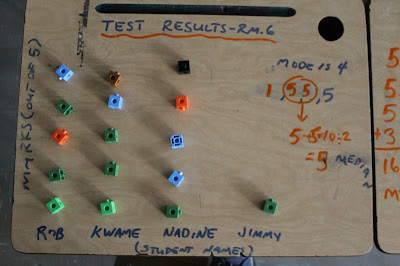The following stations were set up to take a look at a sample of ads and discover some of the techniques used to sell the product. This was done yesterday. Each students had to browse all of the stations and then take a look at 1 ad/station and record his or her observations.
Unfortunately, I was without my camera this afternoon. It was our Play Day/Track and Field day and I did not take one photo. Everyone had a good time.
homework
- History assignment on Donnacona and The Cross, due either May 5 or 6
-Camp Wahanowin 3rd balance of $31.70, past due
- Camp Wahanowin forms
- Scholastic Book Club orders due May 6th
Enjoy your weekend.
I am in the process of trying to link a Google site page to this blog. It may require a TDSB sign in to see it, but I would like it to be a place where I can post copies of documents that you -- a student or parent/guardian-- may print out. It is the newest link set up under the Helpful Links section.
Additionally, I would like to a cue from Mr. Chung and set up a Google classroom for History. I uploaded the most recent assignment and will do that for all future assignments, if done through Google Docs. I will ask both classes for some tips on Google Docs and about how you will accept my invitation to join, once I provide each of you with a class code.
 |
| This shot was from Mr. Rodriguez's presentation on making the transition from Grade 8 to Grade 9. Normally this is saved for Grade 8s, but is an important conversation to have at this time of year for the 7s. They can begin to think about what choices they may want to make for secondary school. There is an online program the Grade 7s are using called My Blueprint and you can take a look at what it is about at http://schools.tdsb.on.ca/norseman/documents/my_blueprint.pdf. While this pdf file is specific to Norseman PS, you can still find useful information and your son or daughter will be able to login to the program and explain it to you. |
 |
| Our current class read. It is intense and gripping and enjoyed by all! |
homework
- History assignment on Donnacona and The Cross, due either May 5 or 6
-Camp Wahanowin 3rd balance of $31.70, past due
- Camp Wahanowin forms
- Scholastic Book Club orders due May 6th
Enjoy your weekend.
Additionally, I would like to a cue from Mr. Chung and set up a Google classroom for History. I uploaded the most recent assignment and will do that for all future assignments, if done through Google Docs. I will ask both classes for some tips on Google Docs and about how you will accept my invitation to join, once I provide each of you with a class code.
















































